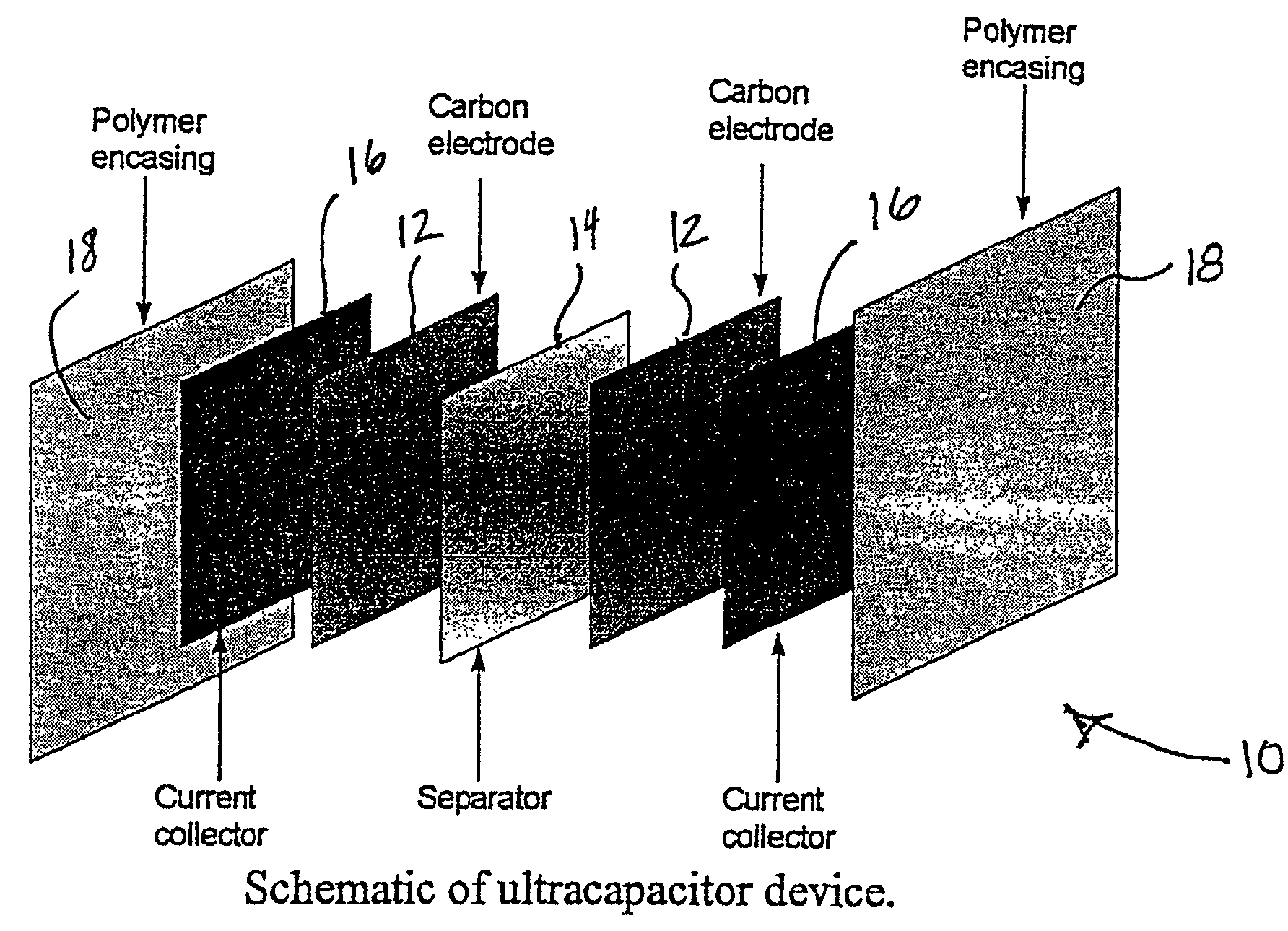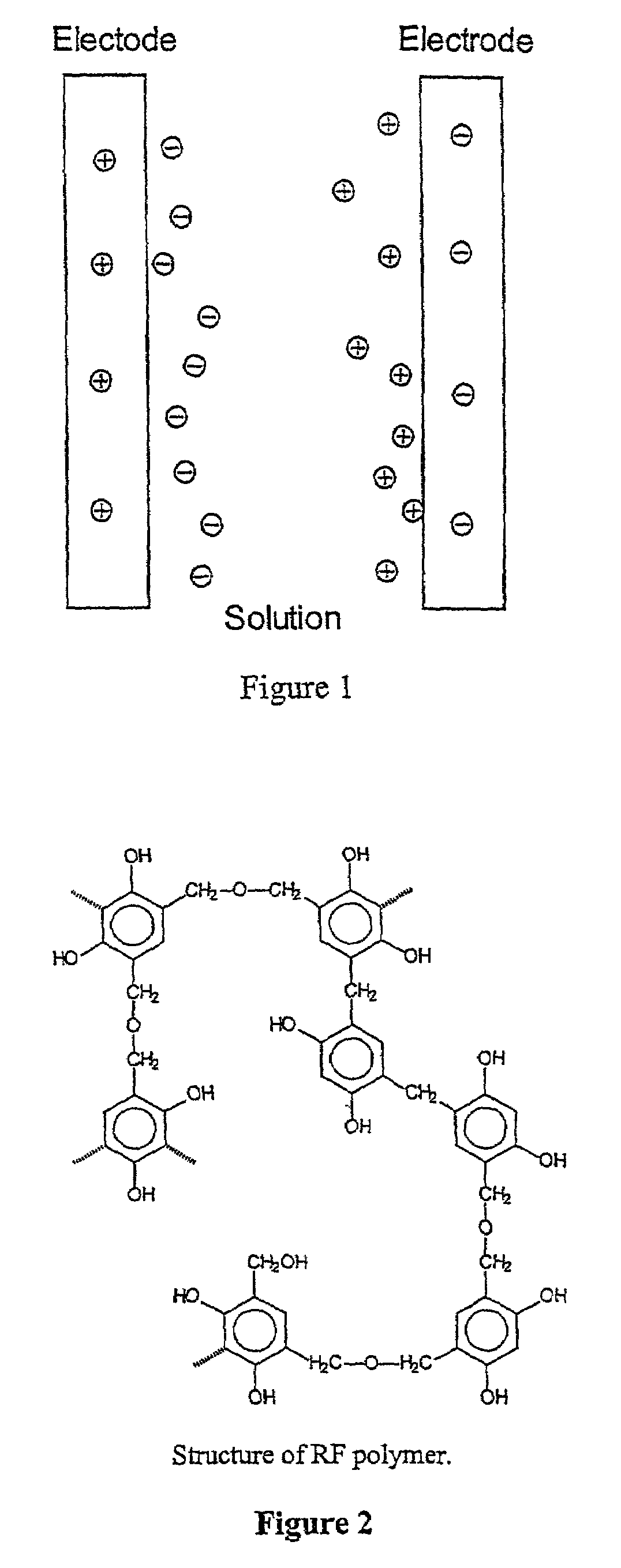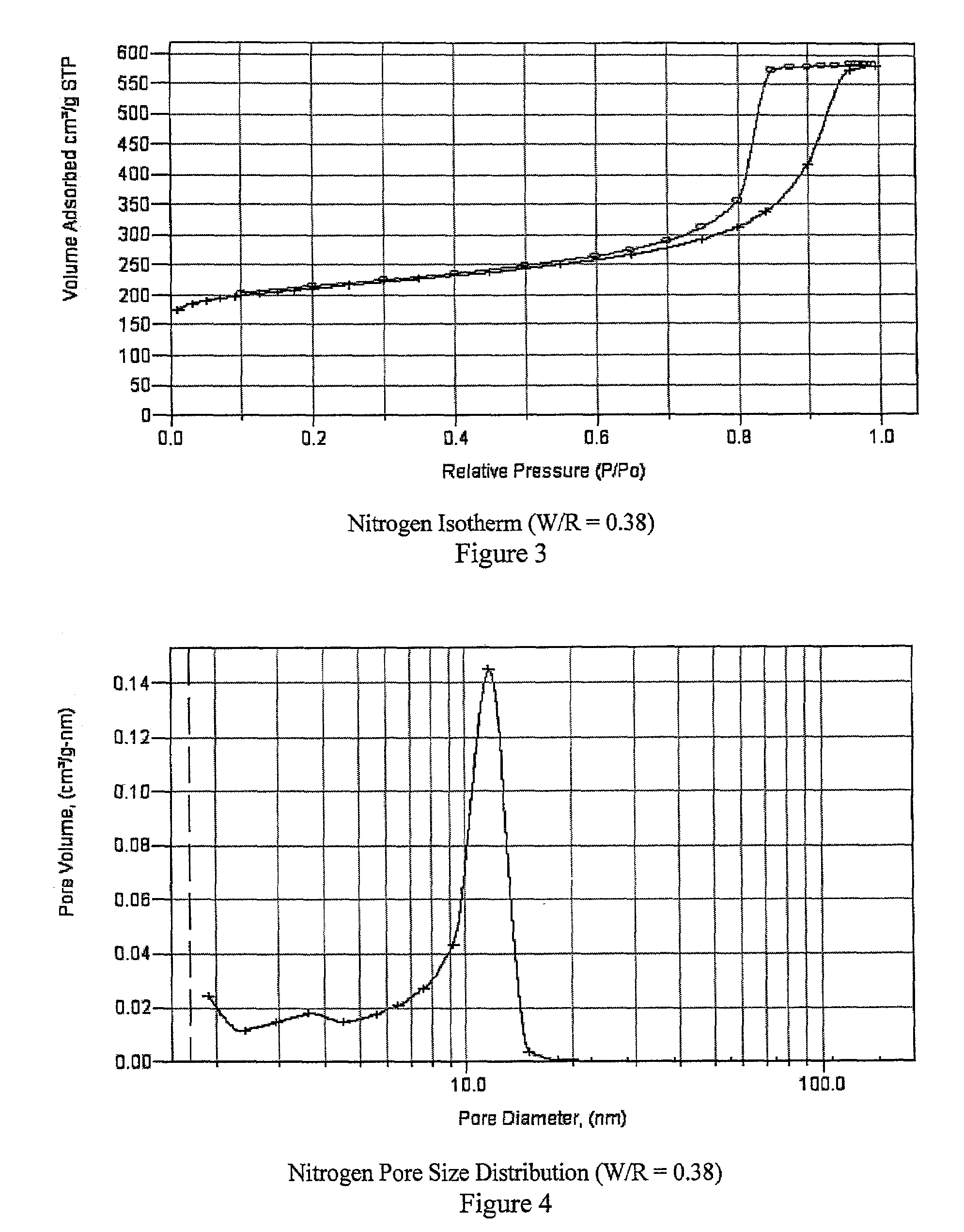Mesoporous carbons and polymers from hydroxylated benzenes
a technology of hydroxylated benzene and mesoporous carbon, which is applied in the field of mesoporous organic polymers, can solve the problems of difficult if not impossible to separate by other conventional means, the porosity and surface area of the support become rate-limiting factors for the catalytic reaction, and the micropores are too small to be readily accessible to liquids, etc., to achieve simple and inexpensive manufacturing, improve volumetric capacitance, and high mesop
- Summary
- Abstract
- Description
- Claims
- Application Information
AI Technical Summary
Benefits of technology
Problems solved by technology
Method used
Image
Examples
example 1
[0044]The second formulation (W / R=0.60) from Table 1 is used as an example. Resorcinol (2.5 g, 0.023 moles) is mixed with 3.4 mL (0.045 moles) of formaldehyde in the form of a 37 weight percent aqueous solution of formaldehyde. To this is added 1.5 mL of water. The acidity of the final solution is pH 3. The aqueous solution was then added to a Teflon lined mold that was sealed to prevent evaporation. The solution was gelled by heating at 70° C. for 24 hours. The resulting polymer was removed from the mold and dried (simple evaporative drying at 110° C. for 4 hours) to remove the water. This polymer has a BET surface area of 256 m2 / g, a mesopore distribution centered at 23 nm and a mesopore volume of 1 cc / g. Because the present polymers are intended for use as carbons in ultracapacitors, the sample preparation method included an additional step in which the polymer is carbonized by pyrolysis under an inert atmosphere (nitrogen or argon), heating from ambient temperature to 900° C. fo...
example 2
[0045]An example of a formulation in which half of the resorcinol is replaced by phenol is prepared by mixing resorcinol (1.7 g, 0.015 moles), phenol (1.5 g, 0.015 moles) and 4.6 mL of 37 weight percent formaldehyde (0.060 moles). To this is added 1.5 mL of water. The acidity of the final solution is pH 2. The solution was gelled by heating at 70° C. for 24 hours. The gelled polymer is removed from the mold and dried to remove the water. The polymer is carbonized by pyrolysis under an inert atmosphere (nitrogen or argon), heating from ambient temperature to 900° C. for 2 hours at a ramp rate of 10° C. / min. The yield is 1.5 g. This sample has a BET surface area of 600 m2 / g and a mesopore distribution centered at 22 nm.
Formation Mechanism
[0046]According to the present invention, it is possible to prepare carbons having variable pore sizes that depend upon the initial formulation. Previously, we observed that RF gels with small pore sizes were transparent, whereas the gels of large por...
PUM
| Property | Measurement | Unit |
|---|---|---|
| pore size | aaaaa | aaaaa |
| pore size | aaaaa | aaaaa |
| pore size | aaaaa | aaaaa |
Abstract
Description
Claims
Application Information
 Login to View More
Login to View More - R&D
- Intellectual Property
- Life Sciences
- Materials
- Tech Scout
- Unparalleled Data Quality
- Higher Quality Content
- 60% Fewer Hallucinations
Browse by: Latest US Patents, China's latest patents, Technical Efficacy Thesaurus, Application Domain, Technology Topic, Popular Technical Reports.
© 2025 PatSnap. All rights reserved.Legal|Privacy policy|Modern Slavery Act Transparency Statement|Sitemap|About US| Contact US: help@patsnap.com



